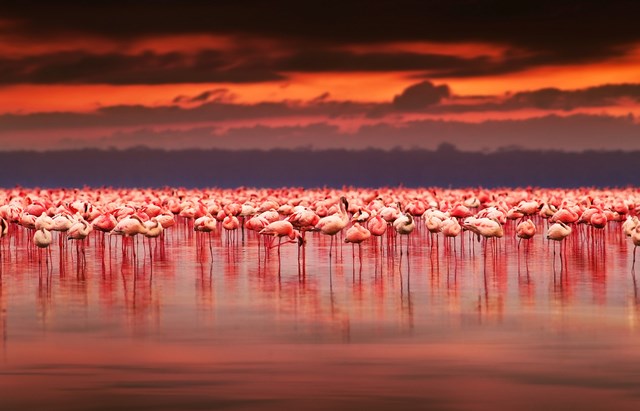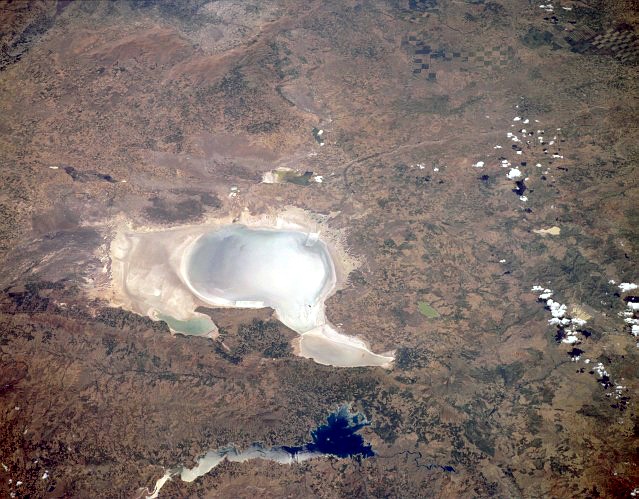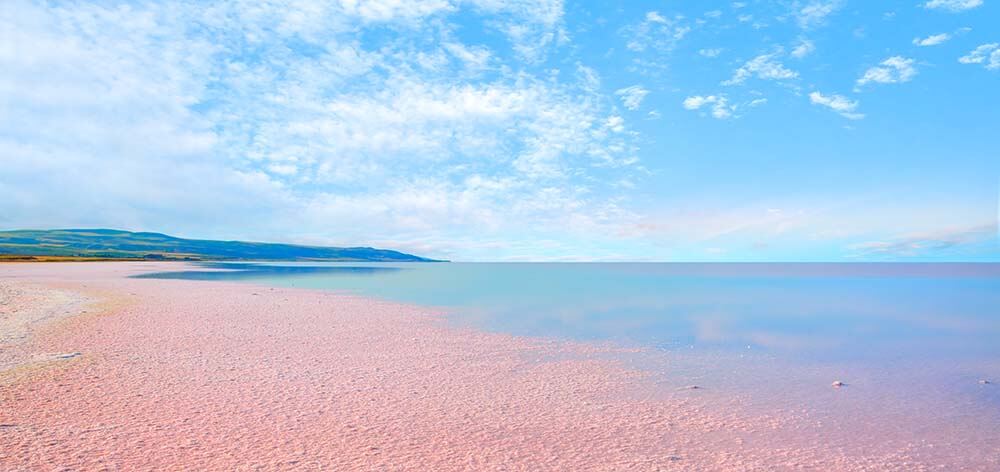Located right in the center of the Central Anatolia Region, in the region where the provinces of Ankara, Aksaray, and Konya intersect, Tuz Lake (salt lake) is Turkey’s second-largest lake after Lake Van. Nearly half of Turkey’s salt needs are met from this lake. Adjacent to the western entrance of Cappadocia, which is right next door, Tuz Lake is not only known for its salt production but also for its natural beauty, endemic plant species, and diverse fauna. According to scientific research, it is one of the rare regions in the world that possesses a natural gene pool for plants. In recent years, Tuz Lake has gained significant tourism value, especially through photo safari tours.

Flamingos are must-see in Salt Lake
Features of Tuz Lake
The lake is a closed basin lake with no outflows. It is located within a tectonic depression buried between the plateaus in its vicinity. The tectonic depression surrounding Tuz Lake is bordered by fault lines on the east and west sides. With a highly dynamic underground structure, the lake’s current appearance has been shaped by the infiltration of meteorological waters into the ground, followed by the melting of salt deposits and the emergence of salt due to tectonic movements. With an area of 11,900 square kilometers, it is the second largest lake in terms of surface area after Lake Van.

Second biggest lake of Turkey
Natural Beauties
The lake, with its high salt content, surprisingly hosts a wide range of endemic species. A significant portion of the world’s endemic plant species’ genes can be found in the vicinity of Tuz Lake. Many endemic plant species that are resistant to salt and drought, which you cannot find anywhere else in the world, are located around the lake. The genes of these plant species adapted to the salty air around the lake will be used, especially in the coming years, to produce new plant species or improve existing ones when plant species disappear due to drought worldwide. Scientists conduct serious studies in this regard, and the lake stands out as a genetic reserve.

Lake sometimes gets pink colour
Especially in the future, when global warming will make plant cultivation a challenge worldwide, the genes of endemic plants in the Tuz Lake basin are considered to be used to compensate for the gap in vegetable and fruit production.
As of now, there are around 38 endemic plant species in Tuz Lake. Not only with its plant species but also with its bird richness around the lake, a remarkable natural structure emerges. It is known that Tuz Lake and its surroundings host birds in three different phases: nesting, wintering, and migration. Due to its high salt content, the lake does not freeze even on the coldest winter days. Therefore, the area on the migration route of birds is highly favored by birds. In the lake, which has turned into a habitat and nesting area for wild birds, you can encounter rare bird species such as flamingos, wild geese, cranes, swans, and sword-billed gulls. In addition, wild ducks, marsh harriers, and various types of gulls can be observed around the lake.
Safari Photography
In addition to its natural richness, Tuz Lake is also known for its natural beauty. It is especially recognized for its high potential for photo safaris. Particularly during sunset, when the sunlight reflects on the surface of the lake, it creates ideal conditions for backlight photography. Just for this reason, photographers flock to Tuz Lake. It also offers opportunities for nature tours, birdwatching, and bird photography.

